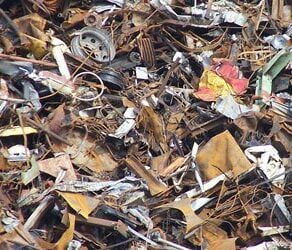
Whether gardening, fixing a broken pipe, or building a deck, using the proper tools to complete your job is essential. Consequently, it is important to maintain your tools and keep them clean so that they will last and be in good shape for any job you have in mind. These simple tips will help you get the most out of your tools.
Cleaning Gardening Tools
(Shovels, hoes, rakes, pruning shears, etc) Scroll down for Workshop Tools and Power Tools
What You Will Need:
- Hose with nozzle
- Putty knife
- Old towels
- Working gloves (optional)
- Steel wool
- Household oil
- Soft rag
The Cleaning Process:
- This should be done outside.
- Scrap off any caked on mud or dirt using a putty knife.
- Using the hose with nozzle set on its most powerful stream; rinse the tools off thoroughly, removing all dirt, mud and other debris.
- Wipe the tools down thoroughly with the old towels.
- If there is any rust on the metal parts of your tools, rub the rust off briskly with the steel wool, rinse and dry again. You may want to wear working gloves for this as steel wool can be rough on your hands.
- If you are storing your tool for the season or for an extended length of time, pour a small amount of household oil (i.e. WD-40, 3-in-1 Household Oil, etc.) on a soft rag and rub over all exposed metal parts on your tools to apply a thin coat. This will help prevent rust and is generally a good idea to do once every six months even if you are not storing your tools.
Cleaning Hand-Held Workshop Tools
(Hammers, wrenches, screw drivers, etc.) Scroll down for Power Tools
What You Will Need:
- Wire scrub brush
- Commercial cleaner (Pine-Sol, Spic ‘n Span, Lestoil, etc)
- Large bucket
- Hot water
- Several old towels
- Heavy duty rubber gloves
- Steel wool
- Household oil
- Soft rag
The Cleaning Process:
- Fill a large bucket with a measured amount of hot water (usually about a gallon or two, depending on the number of tools you are washing) and add the amount of commercial cleaner indicated on the product instructions for the amount of water.
- Place tools in the bucket of cleaning solution, and let soak for at least 30 minutes.
- While wearing rubber gloves, use the wire brush to scrub the tools, removing dirt and grease.
- Remove the tools from the cleaning solution and dry each one thoroughly.
- If any of your tools have rust on them, use the steel wool to rub the rust off.
- Many of today’s hand tools are rust resistant, but if any of your tools are susceptible to rust, it is recommended that about once every 6 months, you coat them with a thin coat of household oil (such as WD-40® or 3-in-1® Household Oil, available at most home improvement and hardware stores) by pouring some on a soft rag and wiping them down. This will help prevent a buildup of rust.
Cleaning Power Tools
(Jigsaws, drills, chain saws, etc.)
What You Will Need:
- Heavy duty working gloves
- Can of compressed air (available at most home improvement stores)
- Cleaning rags
- Bucket
- Hot water
- Commercial cleaner (Pine-Sol, Spic ‘n Span, Lestoil, etc)
- Old towels
- Steel wool
- Toothbrush
The Cleaning Process:
- Make sure you wear heavy duty gloves when handling power tools, especially power tools with sharp cutting edges.
- ALWAYS check the manufacturer’s directions and recommendations for proper cleaning and maintenance of your power tool(s), and follow any such instructions carefully.
- DISCONNECT all power cords from the tool being cleaned.
- If you are cleaning a chainsaw, jigsaw, or any other such type of power tool that tends to collect sawdust, using the compressed air, spray out any sawdust and dirt accumulated within the grooves and crevices.
- Fill a large bucket with a measured amount of hot water (usually about a gallon or two, depending on the number of tools you are washing) and add the amount of commercial cleaner indicated on the product instructions for the amount of water.
- Wet a cleaning rag with the cleaning solution and wring out thoroughly so that it is just damp, not wet or dripping. Wipe down the surface of the tool. Avoid getting water in or around the power cables or motor casings.
- Dry thoroughly with an old towel.
- With a toothbrush, clean around any switches or toggles, making sure to remove any debris or dust that may interfere with the proper operation of any of those switches.
- With a DRY rag, wipe down the power cord, checking it carefully for any nicks, cuts, fraying or damage. If you do find the cord to be damaged in any way, it should be REPLACED before using the power tool again.
- Check any exposed metal parts of the tool for rust. If there is any rust, remove it by rubbing briskly with the steel wool.
Additional Tips and Advice
- NEVER submerge a power tool in water.
- NEVER attempt to clean a power tool while it is plugged in or operational! You will risk serious injury!
- Avoid oiling power tools unless specifically recommended by the manufacturer.
- Cleaning dirt, dust and debris from your tools after each use will make your job much easier when it comes down to more substantial cleaning.
- Always make sure to dry your tools thoroughly after cleaning. If you store your tools while they are wet, they stand a greater chance of developing rust, which will eventually eat away at the metal.









Good one, but I need more clarification on the surface preparation.
…I’m working on my car; the tools I’m using I have in a bucket, which I put on the floorboard of my car. Well, this morning I go out to wrench on my car and my bottle of Lucas Transmission Stop Leak is turned upside-down in the bucket! The bottle was only about 1/4 of the way full, however this thick sticky oil is all over my tools and a few tools are completely covered! It’s a mess! (I’m most concerned about my ratcheting wrenches (I think that’s what they are called). What should I use to remove this sticky supplement from my tools safely?